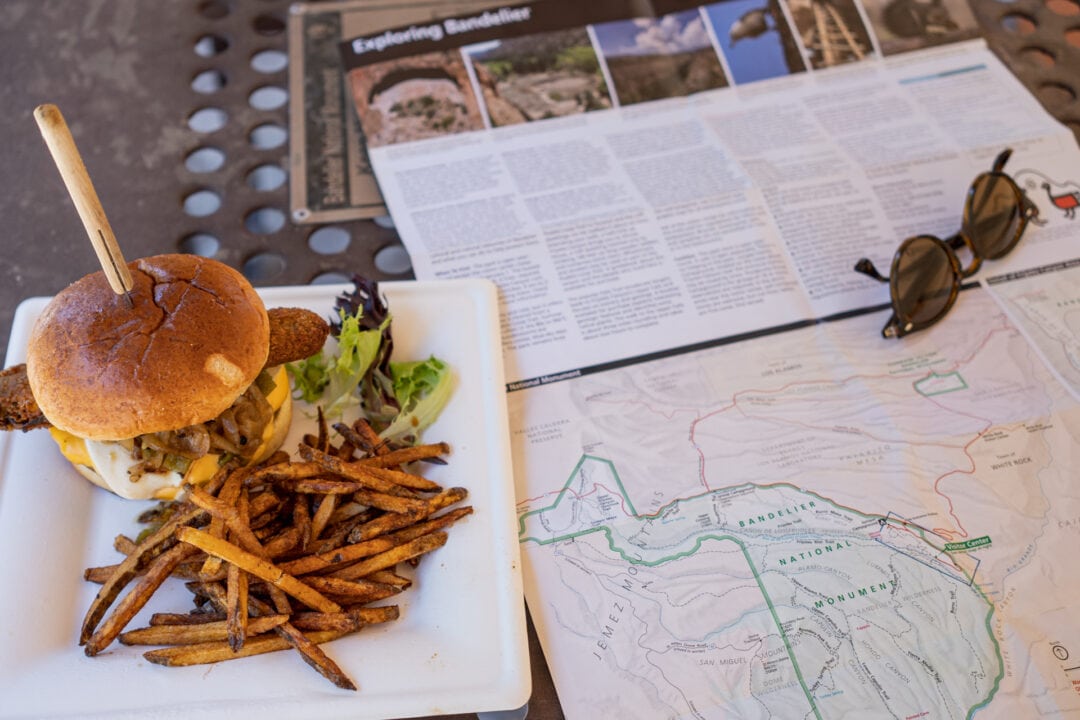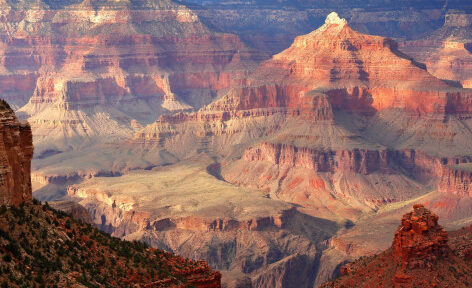Just a short drive away from both Santa Fe and Taos, New Mexico, Bandelier National Monument protects more than 33,000 acres of New Mexican wilderness in addition to preserving evidence of human presence that dates back 11,000 years. Sandstone and tuffs from a volcanic eruption 1 million years ago became the ideal home for Ancestral Puebloans for hundreds of years. They carved homes and living spaces in the soft rock that protected them in the winter and kept them cool in the summer.
Parks, pools, and pueblos: 10 stops on a New Mexico road trip
By 1550, the Ancestral Pueblo people moved to nearby pueblos near the Rio Grande due to severe drought. According to oral traditions, the people of the Cochiti and San Ildefonso Pueblos are descendants of those who once lived within the Frijoles Canyon and the Tsankawi section of the national monument. In its land acknowledgment, the National Park Service (NPS) highlights more than 20 modern tribes and groups with strong ancestral ties to the area.

Visiting Bandelier National Monument is like visiting a museum and national park all in one. Thanks to Native consultants and descendants of the Ancestral Puebloans, the area has a comprehensive, well-organized history, and visitors are able to walk (or climb) through the pre-colonial homes of the original Americans.
Tips for visiting Bandelier National Monument
Get there early
Get to Bandelier early to avoid the summer heat or weekend crowds. In the morning, the cliff dwellings are shaded, and the earlier you arrive, the less likely you are to have to wait in line to climb ladders along the trail.
Bandelier implements a mandatory shuttle from 9 a.m. to 3 p.m. during the summer and fall months due to the limited parking in the Frijoles Canyon Visitor Center. Arriving early allows you to park near the visitor center, which is helpful if you want to keep snacks or a change of clothes in your vehicle.

Be respectful
The Bandelier National Monument area was once home to the Ancestral Pueblo people, whose descendants now live in nearby pueblos, including Cochiti, Santa Clara, and San Ildefonso. Be respectful of their history and their ancestors’ homes:
- Only climb into cavates that have ladders.
- Respect Kivas, which are important social and spiritual spaces.
- Don’t deface any structures or surfaces.
- Don’t stand on Tyuonyi walls or structures.
- Stick to the trail.
Stay hydrated
With hot temperatures, high elevation, and limited shade, it’s important to bring water. There are water stations near the visitor center where you can refill reusable bottles or hydration packs.
What to do at Bandelier National Monument
Walk the Pueblo Loop Trail
The 1.4-mile Pueblo Loop Trail takes visitors through archeological sites of the Ancestral Pueblo people who lived in Frijoles Canyon. On average, visitors spend 45 minutes to an hour on the trail. The first section of the loop is paved and accessible by wheelchairs and strollers. You do have to climb up some stairs to see the cavates—small, human-carved alcoves within the tuff. To peer or step inside one, you’ll also have to climb ladders.
A $2 trail guide at the visitor center narrates the stops along the Pueblo Loop Trail. If you arrive before it opens (9 a.m.), use the virtual tour guide instead. Major stops along the trail include:
- Big Kiva
- Tyuonyi village
- Talus House
- Long House
Note that pets aren’t allowed in buildings or on trails within Bandelier National Monument. They’re allowed only in parking areas and at the campground.

Hike Falls Trail
The trailhead to Falls Trail sits at the end of Backpacker’s Parking Lot, near the visitor center. A 3-mile out-and-back hike, the trail descends 400 vertical feet to Upper Falls. The trail is beautiful year-round, but if you want to see the falls in action, consider visiting mid-spring when the snowmelt is at its peak. However, if the region is in a drought, there might not be any water.
Falls Trail is a great way to experience the geologic history of the Bandelier area and see layers of volcanic rock and tuff. There are steep drop-offs, and plank bridges across the creek, so keep an eye on kids.
Tour the visitor center
After your early morning hikes, spend some time at the Frijoles Canyon Visitor Center. Here, displays share the history of Bandelier from the volcanic eruptions millions of years ago to archeological artifacts of the Ancestral Puebloans.
Along with other nearby structures, the visitor center is an excellent example of “parkitecture,” the rustic design style defined by NPS and the Civilian Conservation Corps (CCC). During the Great Depression and as part of the New Deal, thousands of workers from the CCC built roads, trails, and structures within the national monument.
During World War II, the buildings in Bandelier served as temporary housing for scientists, technicians, and families involved in the Manhattan Project in the nearby town of Los Alamos. A walk around the Frijoles Canyon Visitor Center campus takes you through the stone buildings that served as homes. Notice how your eye seamlessly transitions between the building and the cliffs. The materials used in construction came from the area, enabling the camouflage of the structures.

Eat lunch at Sirphey at Bandelier Cafe
Within a CCC-built structure is an extension of a locally-owned and -operated Los Alamos restaurant, Sirphey at Bandelier. It offers to-go snacks and full-service meals.
If you bring your own food, there are plenty of picnic tables near the visitor center to enjoy lunch in the shade.
Visit the Tsankawi section of Bandelier
After lunch, drive to the Tsankawi section of Bandelier National Monument, located 12 miles away. Tsankawi was home to Ancestral Puebloans during the 1400s and 1500s, and is the ancestral home of the modern pueblo of San Ildefonso. Hike the Tsankawi Loop Trail, a 1.5-mile hike along the mesa, where you’ll walk carved ancient paths, view cavates, and spot petroglyphs along the rock walls.
You’ll need to be able to climb ladders, and the path narrows in certain spots. The trail is exposed, providing little shade or protection from the elements. There are warning signs to avoid the area during possible thunderstorms or icy weather. Similar to the Pueblo Loop Trail, a trail guide is available for purchase; or you can access the guide virtually. Depending on your speed and maneuverability, plan to spend 1 to 1.5 hours here.

Explore Los Alamos
History buffs will want to visit the town of Los Alamos on their way to Tsankawi from Frijoles Canyon. A once-secluded tiny village in the Jemez Mountains, Los Alamos was selected as an ideal location for a secret lab to design and build the world’s first atomic bombs during WWII.
Start your visit at the Los Alamos Visitor Center, where a volunteer will direct you to different sites within the Manhattan Project National Historical Park. The visitor center is only open from 10 a.m. to 3 p.m., Friday to Monday. If it’s closed, NPS has a map that you can use to walk around town.
Where to stay
If you’re looking to stay nearby, your best bet is to camp at the Juniper Family Campground located within Bandelier National Monument. Other campgrounds in the area include the American Spring Dispersed Camping sites in the Santa Fe National Forest and Riana Campground in Gallina, New Mexico.
Where to RV camp at 10 U.S. national monuments
Not interested in camping? There are plenty of hotel options in Los Alamos, Santa Fe, or Taos.
If you go
Bandelier National Monument is open year-round from dawn to dusk. The visitor center, park store, and restaurant are open daily during regular business hours. Check for closures due to fire or snow before visiting. Valid entrance passes ($15 to $25) are required and can be purchased on Recreation.gov.







